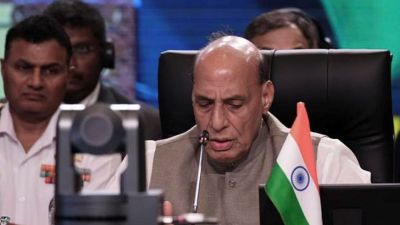Mumbai: BMC sets record, digitises 69 lakh patient records
Each registered patient is assigned a unique health identification, enabling doctors to instantly retrieve comprehensive medical records, including prescriptions and diagnostic test reports, with a simple click.
 The project was first launched at Nair Hospital in 2018, facing significant opposition from staff and doctors who perceived the digital data entry as an added burden. However, after five years, nearly every department in the hospital has adopted HMIS, which has proven highly valuable for streamlined access to medical records during the Covid-19 pandemic.
The project was first launched at Nair Hospital in 2018, facing significant opposition from staff and doctors who perceived the digital data entry as an added burden. However, after five years, nearly every department in the hospital has adopted HMIS, which has proven highly valuable for streamlined access to medical records during the Covid-19 pandemic.
After its successful implementation at the civic-run BYL Nair hospital, six additional hospitals and five dispensaries have embraced the digitalisation of medical reports through the Hospital Management Information System (HMIS). By the end of July, approximately 69 lakh patient records have been digitally established since its introduction in 2018, effectively minimising the possibility of human errors.
Each registered patient is assigned a unique health identification, enabling doctors to instantly retrieve comprehensive medical records, including prescriptions and diagnostic test reports, with a simple click. This has eliminated the necessity of carrying multiple paper documents for follow-up visits. In contrast, at Sion and KEM hospitals, patients are required to carry a minimum of three case papers.
To replicate the success, Cooper, Shatabdi Hospital (Kandivali), Rajawadi, Kasturba, Poder, Seven Hills hospitals along with NESCO and Nehru Science Covid centres have starting using it. A total of 3.9 lakh laboratory and 2.8 radiology reports of patients have been synced into the system as of July 30. “It has effectively decreased the total registration time by one and a half hour. Previously, the registration timing was from 8 am-1 pm, whereas the current registration timing has been shortened to 8-11.30 am,” said Dr Sarika Sunil, nodal officer of HMIS.
In a recent meeting held this week, after assessment, the Brihanmumbai Municipal Corporation (BMC) has decided to include other major and peripheral hospitals into the system to do away with the need of manual data maintenance. Under BMC nearly 54,000 outpatients are treated every day. “The digitalisation also helps in monitoring of medicine stock across all hospitals under BMC,” she added.
The radiology department is seamlessly integrated with software that expedites and enhances the reporting process. Utilising advanced technology, specifically the Picture Archiving and Communication System, reports from various imaging modalities such as CT-scans, X-rays, and sonography, are promptly transmitted and stored within the system. This innovative approach has significantly decreased the reliance on human resources and minimised film wastage.
“The system generates Electronic Medical Records (EMR), introducing a convenient paperless patient record system that particularly aids underprivileged individuals. The aim is to further enhance the HMIS system by integrating new technologies such as voice-to-text data capture, AI applications, and mobile integration,” said Dr Sudhir Medhekar, dean of the hospital.
The project was first launched at Nair Hospital in 2018, facing significant opposition from staff and doctors who perceived the digital data entry as an added burden. However, after five years, nearly every department in the hospital has adopted HMIS, which has proven highly valuable for streamlined access to medical records during the Covid-19 pandemic.
A recent TISS’s study revealed that manual record-keeping within Sion and KEM hospitals is responsible for prolonging waiting times and leading to surgery cancellations due to delays in pathology and radiology services. Furthermore, the accuracy of laboratory results is compromised by the legibility problems arising from lab technicians’ handwritten sample markings.






